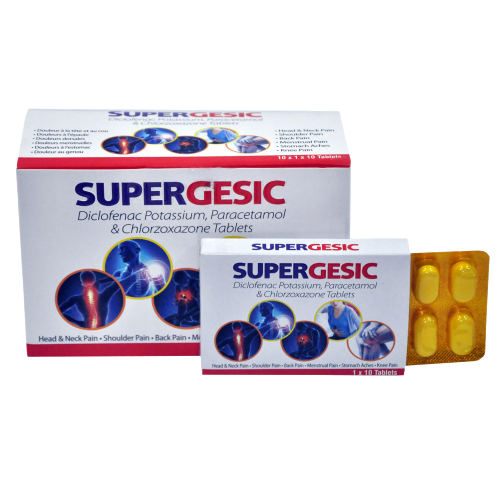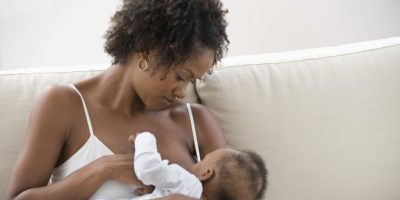Dysmenorrhea is the term used to describe painful menstrual periods.
The uterus is a muscle. Normally, chemicals called prostaglandins cause the uterus to contract during your period. The contractions push out the build-up of tissue that occurs each month inside the uterus. If the contraction is very strong, it can cause pain. The pain may feel like cramping in the lower abdomen, lower back, or thighs. In severe cases, you may have other symptoms as well. These can include nausea, vomiting, loose stools, sweating, or dizziness.
There are two types of dysmenorrhea: “primary” and “secondary”.
Primary dysmenorrhea is common menstrual cramps that are recurrent (come back) and are not due to other diseases. Pain usually begins 1 or 2 days before, or when menstrual bleeding starts, and is felt in the lower abdomen, back, or thighs. Pain can range from mild to severe, can typically last 12 to 72 hours, and can be accompanied by nausea and vomiting, fatigue, and even diarrhea. Common menstrual cramps usually become less painful as a woman ages and may stop entirely if the woman has a baby.
Secondary dysmenorrhea is pain that is caused by a disorder in the woman’s reproductive organs, such as endometriosis, adenomyosis, uterine fibroids, or infection. Pain from secondary dysmenorrhea usually begins earlier in the menstrual cycle and lasts longer than common menstrual cramps. The pain is not typically accompanied by nausea, vomiting, fatigue, or diarrhea.
What causes dysmenorrhea (pain of menstrual cramps)?
Menstrual cramps are caused by contractions (tightening) in the uterus (which is a muscle) by a chemical called prostaglandin. The uterus, where a baby grows, contracts throughout a woman’s
menstrual cycle. During menstruation, the uterus contracts more strongly. If the uterus contracts too strongly, it can press against nearby blood vessels, cutting off the supply of oxygen to the muscle tissue of the uterus. Pain results when part of the muscle briefly loses its supply of oxygen.
To help relieve pain and cramping, try these tips:
- Rest as needed.
- Apply a heating pad to the lower belly or back as directed. A warm bath or massage to these areas may also help.
- Exercise regularly. Many women find that being more active each week helps reduce pain and cramping.
- Your healthcare provider may advice SUPERGESIC tablets as treatments to help control PAIN AND CRAMPING.





16 Comments
altyazili
I like looking through an article that will make people think. Also, many thanks for allowing me to comment! Vittoria Brandtr Penelopa
Olabisi
We are happy it was helpful
dizi
It’s the best time to make a few plans for the long run and it’s time to be happy. I’ve learn this post and if I may just I wish to counsel you some interesting issues or tips. Perhaps you could write next articles regarding this article. I desire to learn even more issues about it!| Marigold Levin Leverett
dizi
I constantly emailed this weblog post page to all my associates, since if like to read it after that my contacts will too. Suzy Osbert Gosney
mp3
Awesome post. I am a regular visitor of your website and appreciate you taking the time to maintain the excellent site. I will be a regular visitor for a really long time. Lynsey Chicky Junie
mp3
Hey there! Do you know if they make any plugins to safeguard against hackers? Briney Farlay Ingar
a2 plan printing
This is a topic which is near to my heart… Take care! Where can I find the contact details for questions?
Metal CNC
Heya i?m for the first time here. I found this board and I find It truly useful & it helped me out a lot. I hope to give something back and help others like you helped me.
california
I used to be able to find good info from your content.
musique électro
You made some decent points there. I looked on the web to find out more about the issue and found most individuals will go along with your views on this web site.
mindfulness
Hey there! I simply wish to offer you a huge thumbs up for the great information you have got right here on this post. I will be coming back to your blog for more soon.
cinema hd downloader
An outstanding share! I have just forwarded this onto a colleague who had been doing a little research on this. And he in fact bought me breakfast simply because I discovered it for him… lol. So allow me to reword this…. Thanks for the meal!! But yeah, thanx for spending some time to discuss this subject here on your blog.
how to clean a keyboard mechanical
Spot on with this write-up, I seriously feel this website needs a great deal more attention. I’ll probably be back again to read through more, thanks for the info!
onlinecasino
I used to be recommended this website by means of my cousin. I’m no longer positive whether or not this put up is written by way of him as no one else recognize such unique approximately my problem. You’re amazing! Thanks!
porno jepang
Great ? I should certainly pronounce, impressed with your web site. I had no trouble navigating through all tabs and related information ended up being truly easy to do to access. I recently found what I hoped for before you know it in the least. Reasonably unusual. Is likely to appreciate it for those who add forums or anything, website theme . a tones way for your client to communicate. Nice task..
Casino
One thing I would like to say is always that before obtaining more pc memory, take a look at the machine within which it is installed. In the event the machine can be running Windows XP, for instance, a memory ceiling is 3.25GB. Applying above this would merely constitute some sort of waste. Make sure that one’s mother board can handle the upgrade amount, as well. Good blog post.